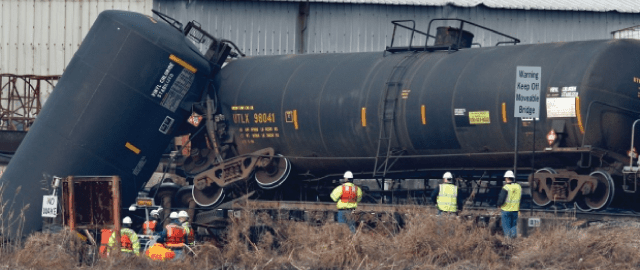
Let’s face it, accidents happen. They occur due to a variety of factors including human error, poor planning and faulty equipment. While it might be easy to blame the machines when something goes awry, equipment failures do not make the accident any less preventable (or potentially catastrophic).
In 2012, a train derailed in Paulsboro, New Jersey, pouring litres upon litres of hazardous vinyl chloride into a nearby stream. 14 of the emergency responders later resigned when they found out that the emergency equipment they used to detect the vinyl chloride was faulty and left them exposed to dangerous levels of the chemical. It turns out that the county had not properly maintained the equipment, with some detectors not even stocked with working batteries!
This faulty equipment led to 14 people being directly exposed to dangerous levels of carcinogenic material. Their equipment for detecting a dangerous situation didn’t function and they were put in danger as a result. But was the situation avoidable?
The county was held responsible as they provided and maintained the equipment, but they were also guilty of not properly training their employees. While these first responders were trained in how to operate the detection equipment, further training could have helped them identify the faulty equipment before they were exposed.
Information and training is paramount to limiting these faulty equipment accidents. When machinery and other delicate instruments are required to complete a task, it isn’t enough to have staff that is trained on how the equipment operates. Take that equipment training a few steps further.
Make sure your training program includes workshops on how to properly maintain and check equipment before doing a job. If an employee understands the nuances of their equipment, things to look for before starting and the potential dangers of not completing a thorough check they are more likely to identify a potential safety issue before it has a chance to become a full-blown accident.
The more employees know about the equipment they use and how that equipment can lead to a dangerous situation if not properly maintained is key. Supervisors, managers and foremen need to be the leaders in this regard.
- Evaluate all equipment and the current maintenance policy on a regular basis
- Ensure all employees who have access to that equipment are fully trained, not just on how to use the equipment, but also on how to troubleshot and identify potential faults
- Establish a procedure for reporting faulty equipment
- Educate employees on the importance of respecting the equipment and what can happen if the equipment doesn’t function properly
When dealing with heavy equipment and potentially dangerous situations, it is not safe practice to assume that the equipment is in working order. These assumptions are what led to the Paulsboro situation. Empower your employees to take safety into their own hands. Routine safety checks and outdated safety checklists aren’t enough to mitigate damage. Through training and education, you can help employees understand that they must take initiative when it comes to safety and you’ll empower them to identify potential problems before they arise.










